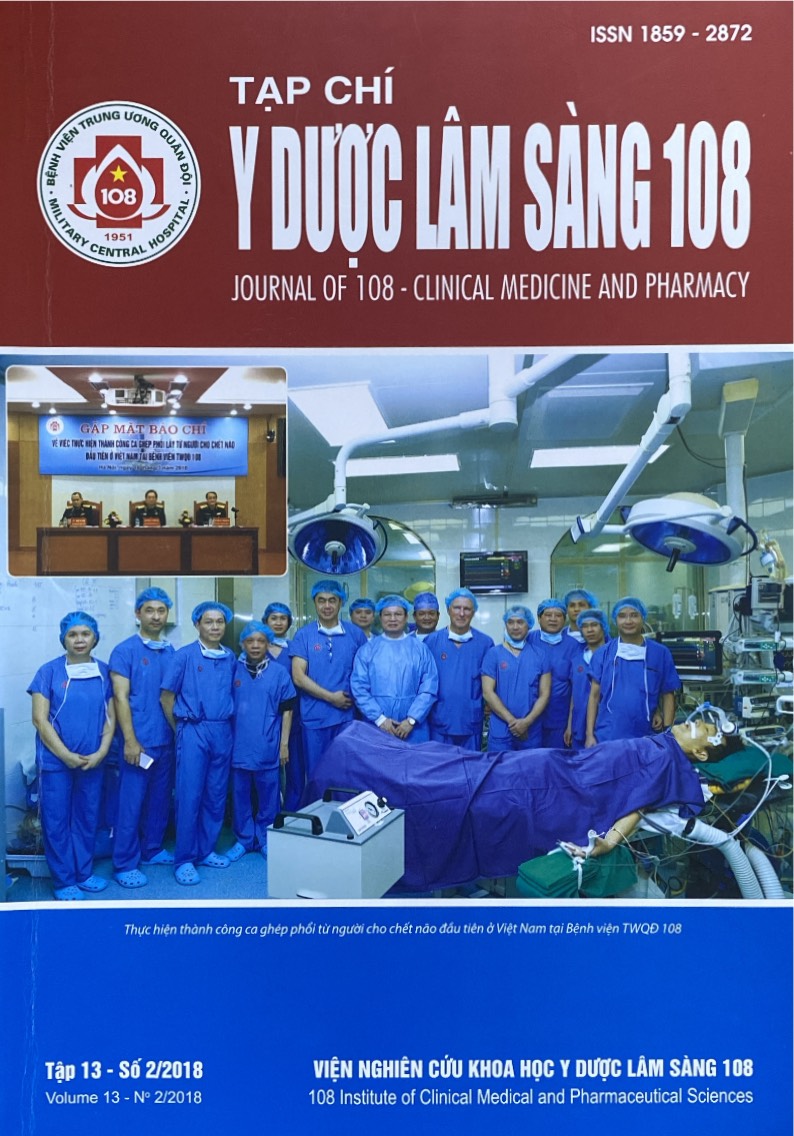Research some features of family and living environment in children with atypical bacterial pneumonia at Vietnam National Children’s Hospital in 2014
Main Article Content
Keywords
Abstract
Objective: To describe the feature of family and environment in children with atypical pneumonia due to bacteria with the age from 12 months to 15 years old at Vietnam National Children’s Hospital in 2014. Subject and method: A descriptive study was conducted on 215 patients with pneumonia at Vietnam National Children’s Hospital. Multiplex PCR and enzyme-linked immunosorbent assay were used to detect M. pneumoniae, C. pneumoniae and L. pneumophila in those specimens. Result: Features of family and environment in children with atypical pneumonia due to bacteria include: Patients living in the country side and mountainous areas account for 51.17%; whose fathers have attende high school account for 71.16%; whose mothers have attended high school account for 71.63%; whose fathers are farmers and freelancers account for 63.72%; whose mothers are farmers and freelancers account for 61.86%; children living in crowded place have percentage of 64.19%; those who exposed to dust account for 20.47%; those who exposed to cigarette smoke account for 36.28%; those who use air conditioner account for 46.98%; those who use water from wells account for 43.26%. There is no difference in features of family and living environment between two groups of co-infected atypical pneumonia and atypical pneumonia (p>0.05). Conclusion: Most of the cases of atypical bacterial pneumonia are thoses who parents are farmers, freelancers, low education and nearly half of them use the air conditioner. There is no difference in features of family and living environment between two groups of co-infected atypical pneumonia and atypical pneumonia.
Article Details
References
2. Forest WA, Summersgill JT et al (2007) A Worldwide perspective of atypical pathogens in community-acquired pneumonia. American Journal of Respiratory and Critical Care Medicine 17: 1086-1093.
3. Kim C, Nyoka R, Jamal A (2011) Epidemiology of respiratory infections caused by atypical bacteria in two Kenyan refugee camps. J Immigrant Minority Health, published online 24 june 2011.
4. Leggiadro, Robert J (2009) Community outbreak of Mycoplasma pneumoniae infection: School-based cluster of neurologic disease associated with household transmission of respiratory illness. Pediatric Infectious Disease Journal 28(3): 260.
5. Prapphal N, Suwanjutha S, Durongkaveroj P (2006) Prevalence and clinical presentations of atypical pathogens infection in community acquired pneumonia in Thailand. J Med Assoc Thai 89(9).
6. Rudan I, Boschi-Pinto C, Biloglav Z (2008) Epidemiology and etiology of childhood pneumonia. Bull World Health Organ 86(5): 408-416.
7. Sayed Zaki ME, Goda T (2009) Clinico-pathological study of atypical pathogens in community-acquired pneumonia: A prospective study. J Infect Developing Countries 3(3): 199-205.
8. Uarez MM, Lorza ME, Donado JH et al (2011) Clinical and epidemiological characteristics of pediatric patients with positive serology for Mycoplasma pneumoniae, treated in the third level hospital from 2006 to 2008. Colomb Med 42: 138-143.
9. Weiss TW, Schumacher S, Kaun C et al (2010) Association between smoking and presence of Mycoplasma pneumoniae in circulation leukocytes. Swiss Med Wkly 140, w13105.
10. WHO (1990) Epidemiology, prevention and control of legionellosis. Memorandum from a WHO meeting 66(2): 155-164.
 ISSN: 1859 - 2872
ISSN: 1859 - 2872
